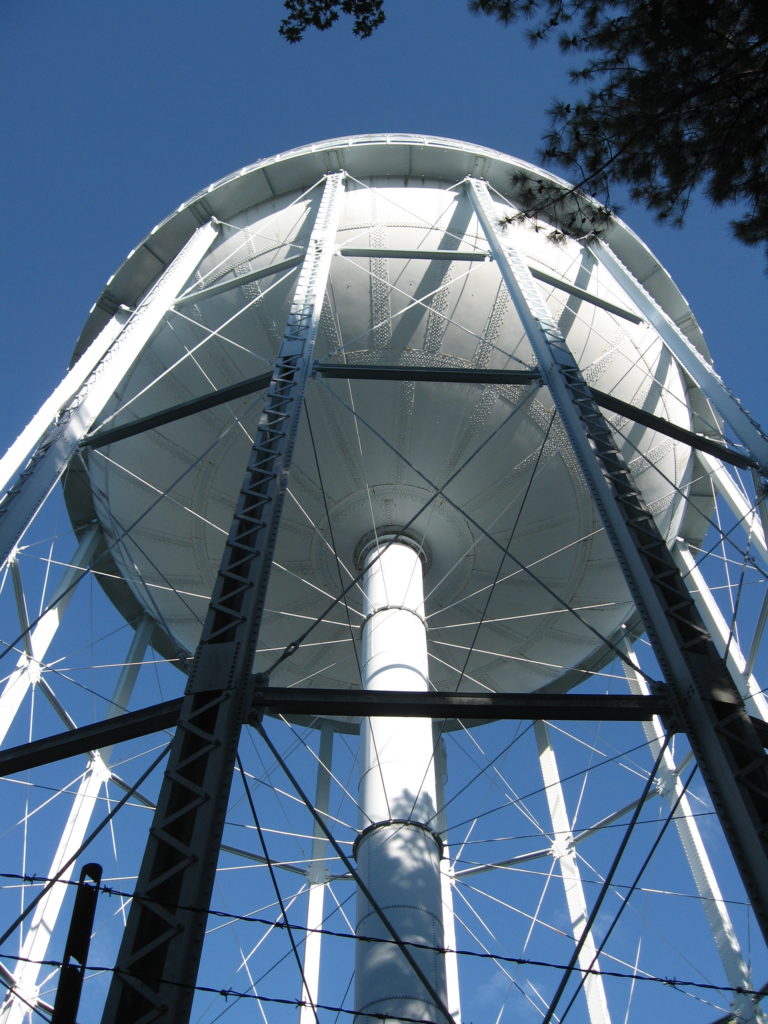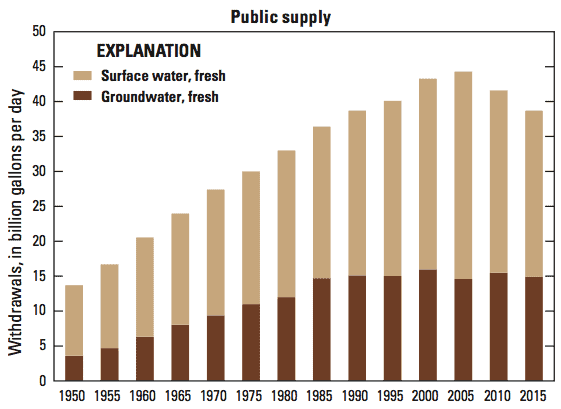Water for household uses comes from a variety of sources and from a variety of stages in the water cycle. For example, municipalities may operate a city-wide water department, also known as a public water supply system. Public supply refers to water withdrawn by public and private water suppliers that provide water to at least 25 people or have a minimum of 15 connections.1United States Geological Survey, 2019, Public-supply Water Use, https://www.usgs.gov/mission-areas/water-resources/science/public-supply-water-use (accessed 12/19/2022) Public-supply water is delivered to users for domestic, commercial, and industrial purposes. These systems draw water from surface waters or groundwater and pass it through treatment facilities and then a vast network of pipes to bring it to private homes and businesses. A very small portion of public supply water comes from desalination facilities. About 87% of all people in the United States rely on public-supply water for their household use.1

Public-supply withdrawals from both surface water and groundwater sources are small fractions of overall human withdrawals from the water cycle. Public supply represents about 14% of total freshwater withdrawals.1
While we await updated numbers from the USGS for 2020 (they compile data and report every five years), we can see that trends from 1950-2015 show public-supply withdrawals continuing the decline first observed in 2010. Mandated or encouraged restrictions on public-supply water use, often in response to severe droughts (e.g., California and Texas) impact these trends. Three States—California, Florida, and Texas—accounted for 37 percent of total groundwater withdrawals for public supply. 1

The alternative to this system is more common in rural areas. Individual landowners dig wells or develop existing springs to harness the groundwater resource. Other self-supplied sources of water include rainwater collected in cisterns and surface water sources, such as ponds, lakes and streams.
Images: “No Swimming” by littleny via Shutterstock
